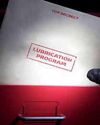
One day my dad brought me a Chilton's manual for that particular vehicle. It was filled with how-to's, diagrams and troubleshooting guides. It made the jobs significantly easier to perform but also provided much-needed specifications on items such as torque, tolerances and other specs to make the vehicle operate better and more reliably. Chilton has shifted primarily to an online platform now, but I still have that physical manual.
The idea of having a manual serve to enhance understanding and performance is not a new concept, but it's one that isn't employed as much in the industrial space as it should be especially as it relates to lubrication. Most facilities may have operating manuals for a piece of equipment that have some instructions related to lubrication, but many do not go into the level of detail required to ensure the reliable operation of the equipment. Nor do many facilities have a set of standards that relate to the lubrication activities required to sustain the program. This is why having a lubrication standards manual is a key component of a lubrication program.
A standards manual should be a living document that outline seach aspect of the lubrication program and then provides guidance for how activities should be performed. The idea is that it will serve as a repository of information that can be called upon when needed and as a way to keep the programin a consistent state. With employee turnover or changing priorities, the standards manual becomes a time capsule of how work should be done and managed and even who does the work.
هذه القصة مأخوذة من طبعة September - October 2023 من MACHINERY LUBRICATION INDIA.
ابدأ النسخة التجريبية المجانية من Magzter GOLD لمدة 7 أيام للوصول إلى آلاف القصص المتميزة المنسقة وأكثر من 9,000 مجلة وصحيفة.
بالفعل مشترك ? تسجيل الدخول
هذه القصة مأخوذة من طبعة September - October 2023 من MACHINERY LUBRICATION INDIA.
ابدأ النسخة التجريبية المجانية من Magzter GOLD لمدة 7 أيام للوصول إلى آلاف القصص المتميزة المنسقة وأكثر من 9,000 مجلة وصحيفة.
بالفعل مشترك? تسجيل الدخول

The Secrets For Implementing A Clean lubricant Program
If you could find an investment that guaranteed a return 40 times greater than your initial investment, you probably wouldn't pass it up.

MAINTAIN? REPAIR? REPLACE?
When considering the life of any asset, the question arises: what types of interventions should be planned to keep it operating or to restore operation in the event of its failure?

Engineering Reports Should Be Like Bad Movies
I'm frequently asked to review engineering reports, and I'm continually baffled by how many engineers want to take their readers on a journey instead of getting to the point.

WHY SCHEDULED OIL CHANGES AREN'T ENOUGH TO MITIGATE LUBRICANT CONTAMINATION
There are few problems more insidious or damaging to large industrial machinery than contaminated lubricant.

LUBRICATION CONTAMINATION PREVENTION
How many articles have you read, or seminars listened to, that tout the value of contamination control? If you are like me, they number in the hundreds—if not thousands. One thing about these articles and seminars that bothers me is the word “control”.

LUBRICANT CONTAMINATION PREVENTION AND MITIGATION: A Guide For Maintenance Professionals
Lubricants are essential for the smooth and efficient operation of many types of machinery, from engines and turbines to gears and bearings.

TASK-BASED TRAINING | INSPECTING A SINGLE-POINT LUBRICATOR
A single-point lubricator is a device engineered to attach to a single unit to regularly and automatically deliver a small amount of clean grease or lubricating oil to a specific area.

TOP LEADERSHIP FOCUSES FOR IMPROVED RELIABILITY AND COST REDUCTION
Here’s a scenario that may sound eerily familiar – you have a new reliability initiative.

4 KEY ELEMENTS FOR INTERPRETING AN OIL ANALYSIS REPORT
Years ago, a customer came into my office, visibly upset. He had just received his second oil analysis report for one of his Caterpillar gas engines.

ASTM ENHANCEMENTS TO MICROSCOPIC PARTICLE IDENTIFICATION AND DOCUMENTATION
In 1982, Daniel Anderson published his influential book, \"Wear Particle Atlas\", which describes, sizes, and classifies particles found in oil.